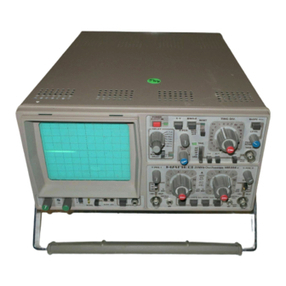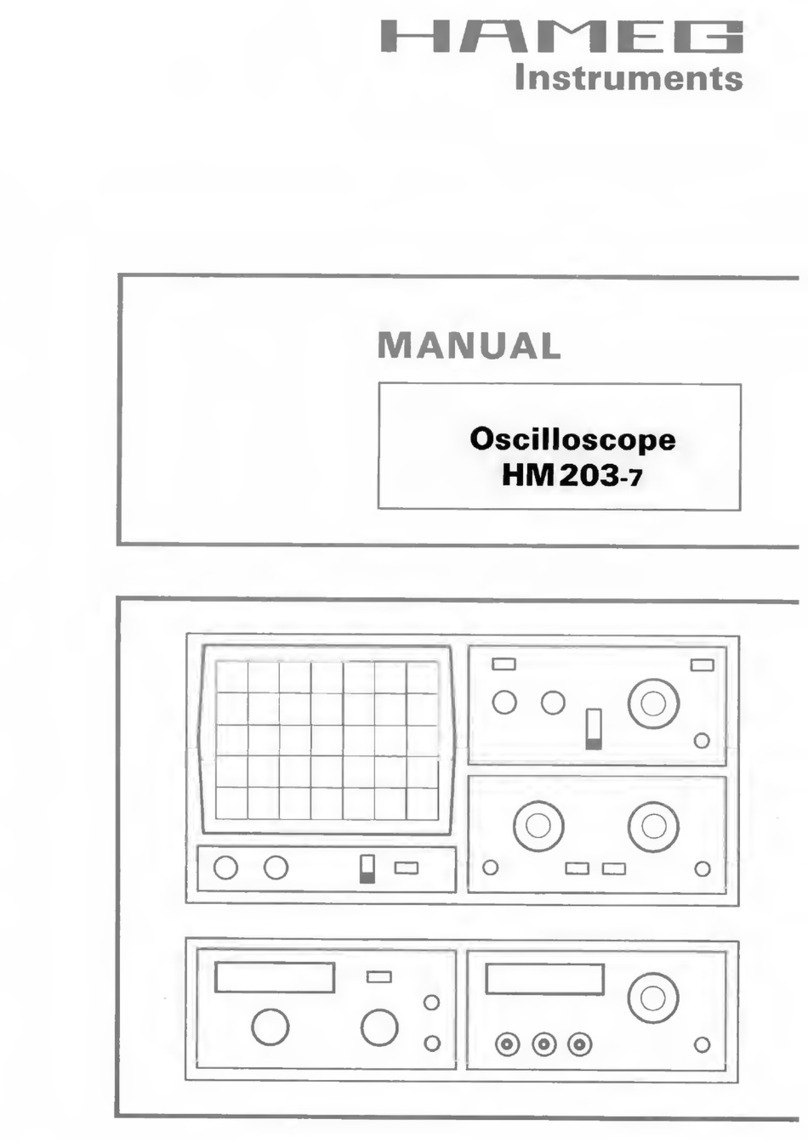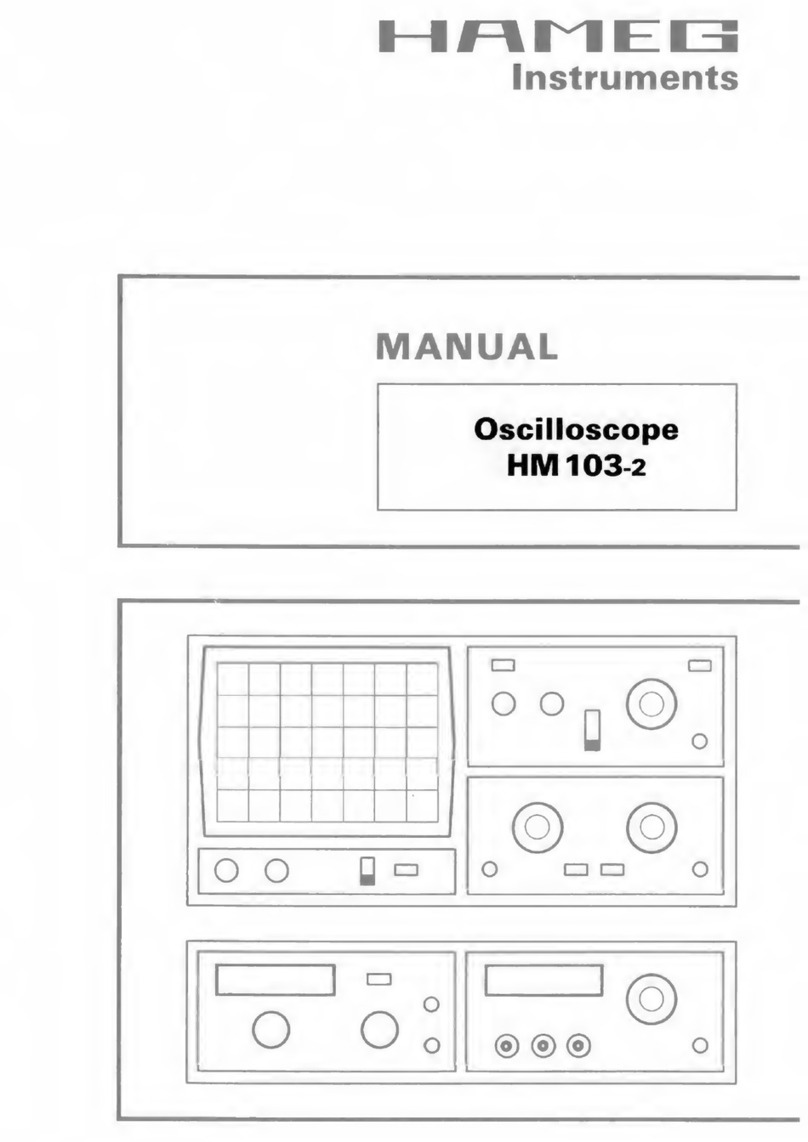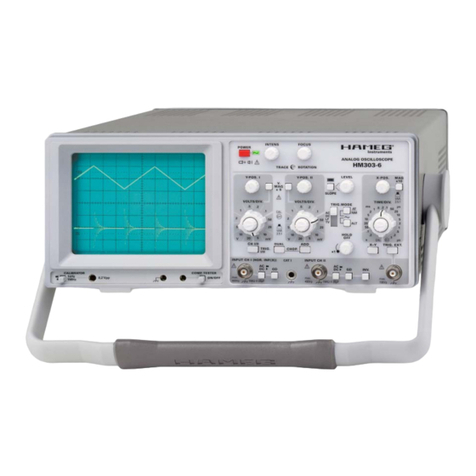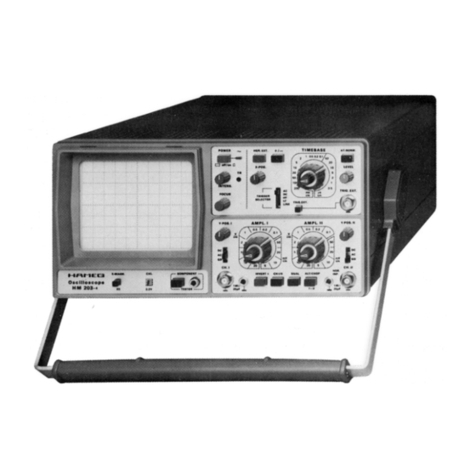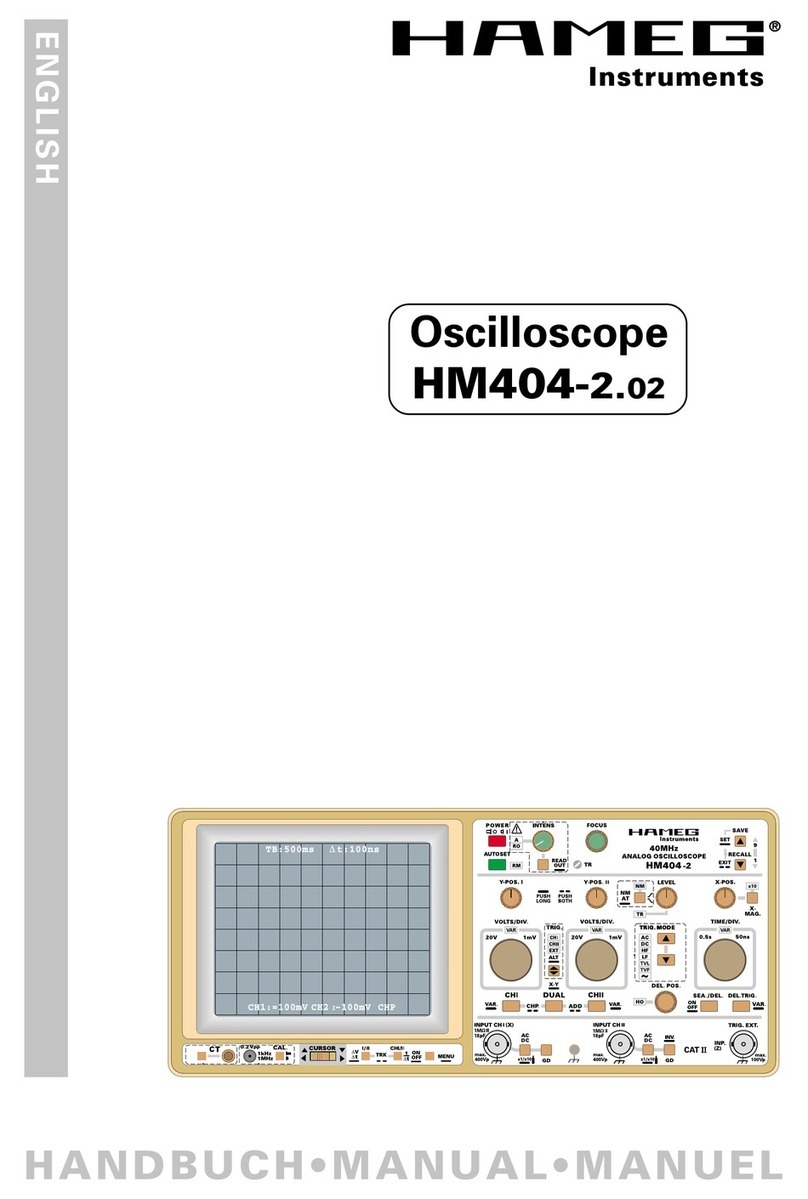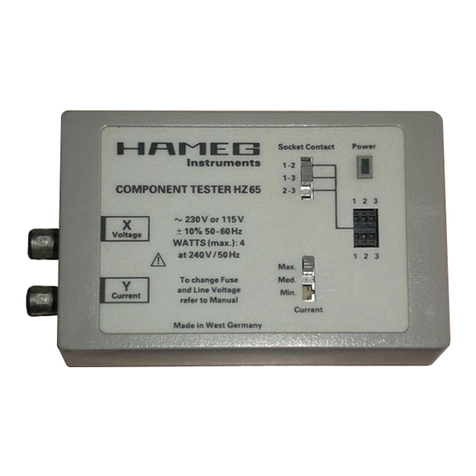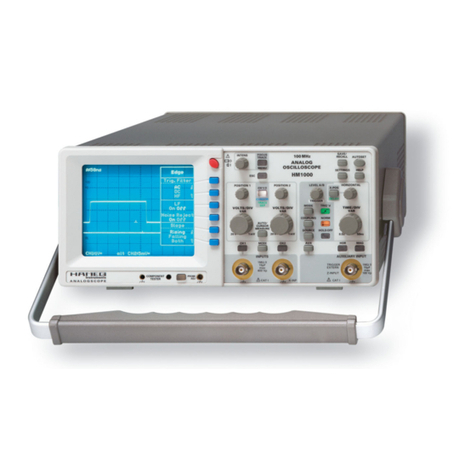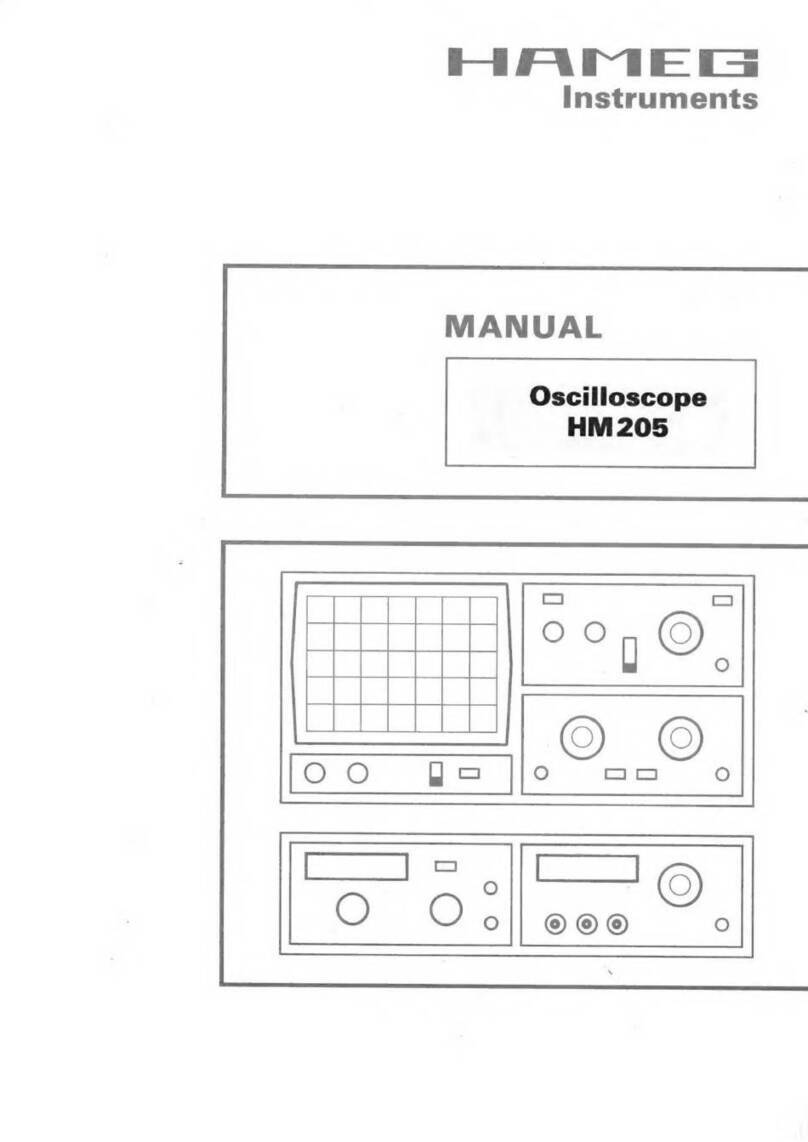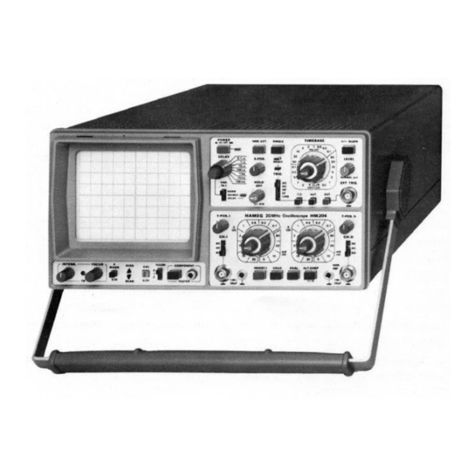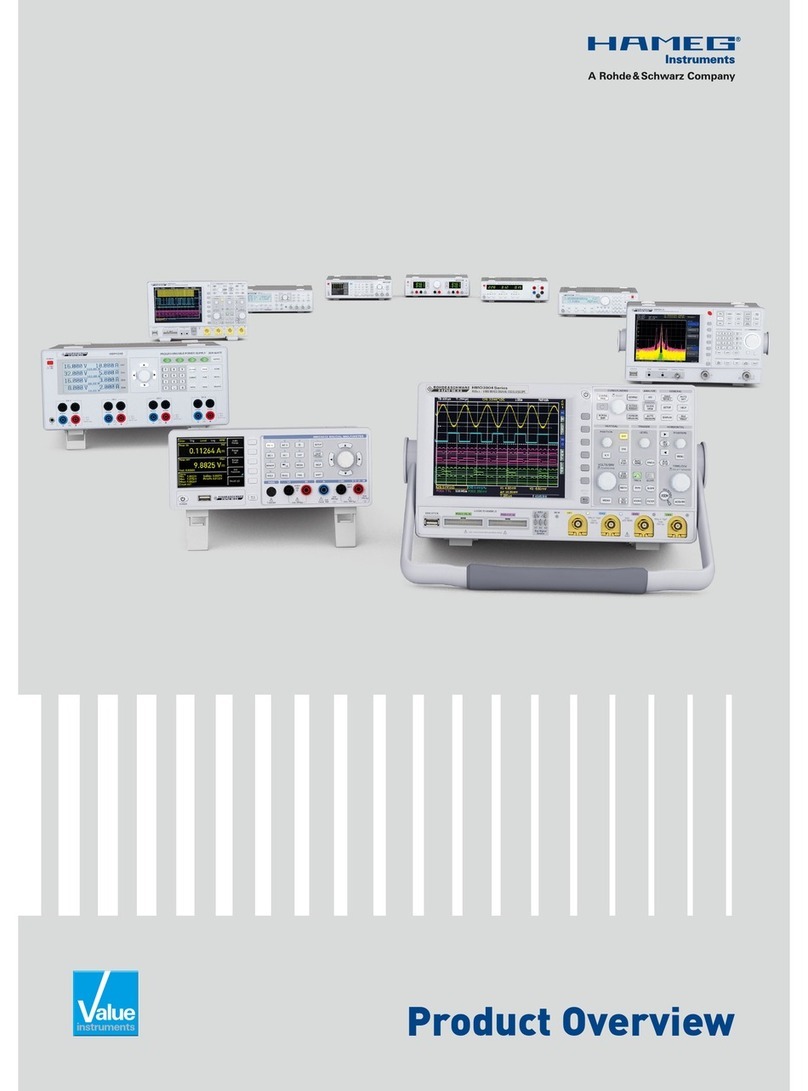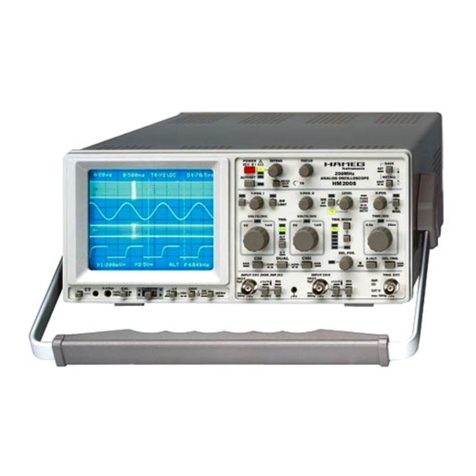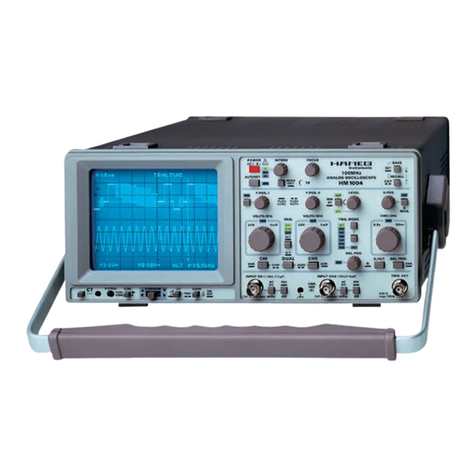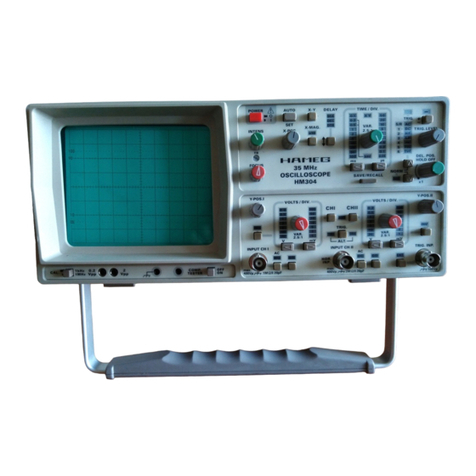Subject to change without notice
8
Voltage values of a sine curve
Vrms = effective value; Vp= simple peak or crest value;
Vpp = peak to peak value; Vmom = momentary value.
The minimum signal voltage which must be applied to the Y input
for a trace of 1div height is 1mVpp (± 5%) with this deflection
coefficient displayed on the screen (readout) and the vernier
switched off (VAR-LED dark). However, smaller signals than this
may also be displayed. The deflection coefficients are indicated
in mV/div or V/div (peak to peak value).
The magnitude of the applied voltage is ascertained by multiplying
the selected deflection coefficient by the vertical display height
in div. If an attenuator probe x10 is used, a further multiplication
by a factor of 10 is required to ascertain the correct voltage value.
This factor can be entered into the oscilloscope’s memory for
automatic calculation.
For exact amplitude measurements, the variable control (VAR)
must be set to its calibrated detent CAL position.
With the variable control activated the deflection sensitivity can
be reduced up to a ratio of 2.5 to 1 (
please note ”controls and
readout”
). Therefore any intermediate value is possible within
the 1-2-5 sequence of the attenuator(s).
With direct connection to the Y input, signals up to 400 Vpp
may be displayed (attenuator set to 20 V/div, variable
control to 2.5:1).
With the designations
H = display height in div,
U = signal voltage in Vpp at the Y input,
D = deflection coefficient in V/div at attenuator switch,
the required value can be calculated from the two given quantities:
However, these three values are not freely selectable. They have
to be within the following limits (trigger threshold, accuracy of
reading):
H between 0.5 and 8div, if possible 3.2 to 8div,
U between 0.5 mVpp and 160 Vpp,
D between 1 mV/div and 20 V/div in 1-2-5 sequence.
Examples:
Set deflection coefficient D = 50 mV/div 0.05 V/div,
observed display height H = 4.6 div,
required voltage U = 0.05x4.6 = 0.23 Vpp.
Type of signal voltage
The oscilloscope HM504-2 allows examination of DC voltages
and most repetitive signals in the frequency range up to at least
50 MHz (–3 dB).
The Y amplifiers have been designed for minimum overshoot and
therefore permit a true signal display.
The display of sinusoidal signals within the bandwidth limits
causes no problems, but an increasing error in measurement due
to gain reduction must be taken into account when measuring
high frequency signals. This error becomes noticeable at approx.
14 MHz. At approx. 30 MHz the reduction is approx. 10% and the
real voltage value is 11% higher. The gain reduction error can not
be defined exactly as the –3 dB bandwidth of the Y amplifiers
differs between 50 MHz and 55 MHz.
When examining square or pulse type waveforms, attention
must be paid to the harmonic content of such signals. The
repetition frequency (fundamental frequency) of the signal must
therefore be significantly smaller than the upper limit frequency
of the Y amplifiers.
Displaying composite signals can be difficult, especially if they
contain no repetitive higher amplitude content that can be used
for triggering. This is the case with bursts, for instance. To obtain
a well triggered display in this case, the assistance of the variable
holdoff function or the delayed time base may be required.
Television video signals are relatively easy to trigger using the
built in TV Sync Separator (TV).
For optional operation as a DC or AC voltage amplifier, each Y
amplifier input is provided with a DC/AC switch. DC coupling should
only be used with a series connected attenuator probe or at very
low frequencies, or if the measurement of the DC voltage content
of the signal is absolutely necessary.
When displaying very low frequency pulses, the flat tops may be
sloping with AC coupling of the Y amplifier (AC limit frequency
approx. 1.6 Hz for 3dB). In this case, DC operation is preferred,
provided the signal voltage is not superimposed on too high a DC
level. Otherwise a capacitor of adequate capacitance must be
connected to the input of the Y amplifier with DC coupling. This
capacitor must have a sufficiently high breakdown voltage rating.
DC coupling is also recommended for the display of logic and
pulsesignals,especiallyifthepulsedutyfactorchangesconstantly.
Otherwise the display will move upwards or downwards at each
change. Pure direct voltages can only be measured with DC
coupling.
Amplitude Measurements
In general electrical engineering, alternating voltage data normally
refers to effective values (rms = root mean square value).
However, for signal magnitudes and voltage designations in
oscilloscope measurements, the peak to peak voltage (Vpp) value
is applied. The latter corresponds to the real potential difference
between the most positive and most negative points of a signal
waveform.
If a sinusoidal waveform, displayed on the oscilloscope screen,
is to be converted into an effective (rms) value, the resulting peak
to peak value must be divided by 2 x √2 = 2.83. Conversely, it
should be observed that sinusoidal voltages indicated in Vrms
(Veff) have 2.83 times the potential difference in Vpp. The
relationship between the different voltage magnitudes can be
seen from the following figure.
Type of signal voltage
